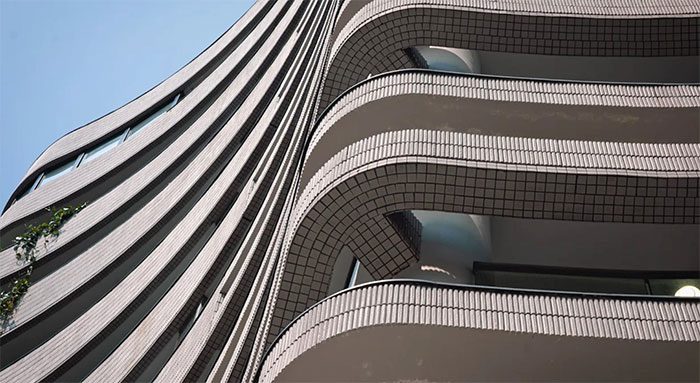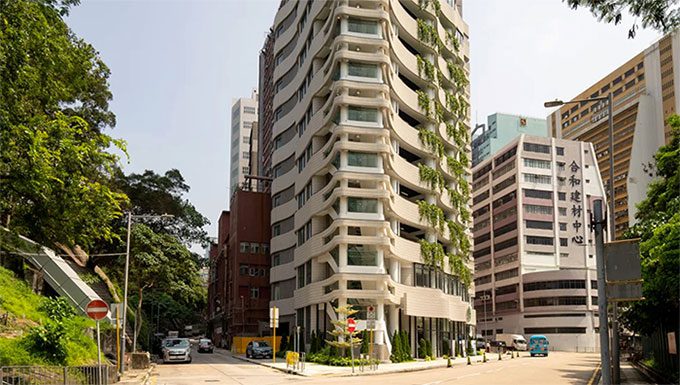The starting price of $53,000 (over 1.2 billion VND) for a space equivalent to a shoebox makes the 12-story Shan Sum building in Hong Kong (China) considered too expensive for living.
This facility is specifically designed for wealthy clients—those seeking a “luxurious” resting place when they transition to the “other side.”
According to CNN, Shan Sum is an ancient church designed by a German architect, used to store the ashes of 23,000 individuals. The price for a space sufficient for two urns can reach up to $76,000; while eight urns (suitable for a multi-generational family) cost $430,000 (over 10 billion VND).
Thus, a “residence” in Shan Sum is even more expensive than homes for the living. For comparison, in March, a mansion in the luxury area of The Peak was auctioned for $32,000/0.09m2.

The starting price for a niche in this building can reach $53,000.
Nevertheless, Shan Sum is not the most expensive resting place for the deceased. According to the Hong Kong Consumer Council, the complex resembling a temple in the northern suburb of Fanling is currently priced at $660,000 per urn. This price does not include management fees (at least $25,000) for maintenance.
This investment may not seem excessive considering the lengthy afterlife, but places like Shan Sum only allow ash storage for a specific duration, in accordance with private licenses. The licenses are valid for 10 years and can take a long time to obtain.
According to architect Ulrich Kirchhoff, Shan Sum has a lounge area for families visiting their deceased loved ones. About one-fifth of the building’s area is open space designed with a wave structure inspired by traditional Chinese cemeteries. Dehumidifiers and air conditioning systems are fully installed. Clients can even order offerings through an app.
It is reported that Shan Sum is the brainchild of Margaret Zee, a 70-year-old businesswoman known for her wealth from the jewelry and real estate industries, and currently running a charity fund named after her. Zee states that respecting the deceased is an essential part of Chinese culture.

Shan Sum building.
“This is not just a place to bid farewell to loved ones as they transition to the other side. It is also a place for those left behind to find peace,” Ms. Zee said, adding that her struggle to find a burial place for her late husband in 2007 urged her to take action.
In Hong Kong (China), the supply-demand imbalance has driven real estate prices to record highs. Essentially, in an area with over 7 million residents, competition for space is intensifying—for both the living and the deceased. The hilly terrain renders much of the area unsuitable for residential development.
Due to land scarcity, real estate developers prefer high-rise buildings like Shan Sum, subsequently compartmentalizing the interior as much as possible. Consequently, the average living space is only about 39m2, according to the 2021 census.
The aging population further accelerates the demand for ash storage. Currently, 20% of Hong Kong’s population is over 65 years old, according to census data. This figure is projected to rise to 30% by 2069.
Over 90% of residents opt for cremation, while ash storage space is gradually running out. Most do not wish to scatter ashes in rivers as the Chinese believe in preserving material objects to show respect and remembrance. Hong Kong is rapidly increasing the number of columbariums to meet the demand.





















































